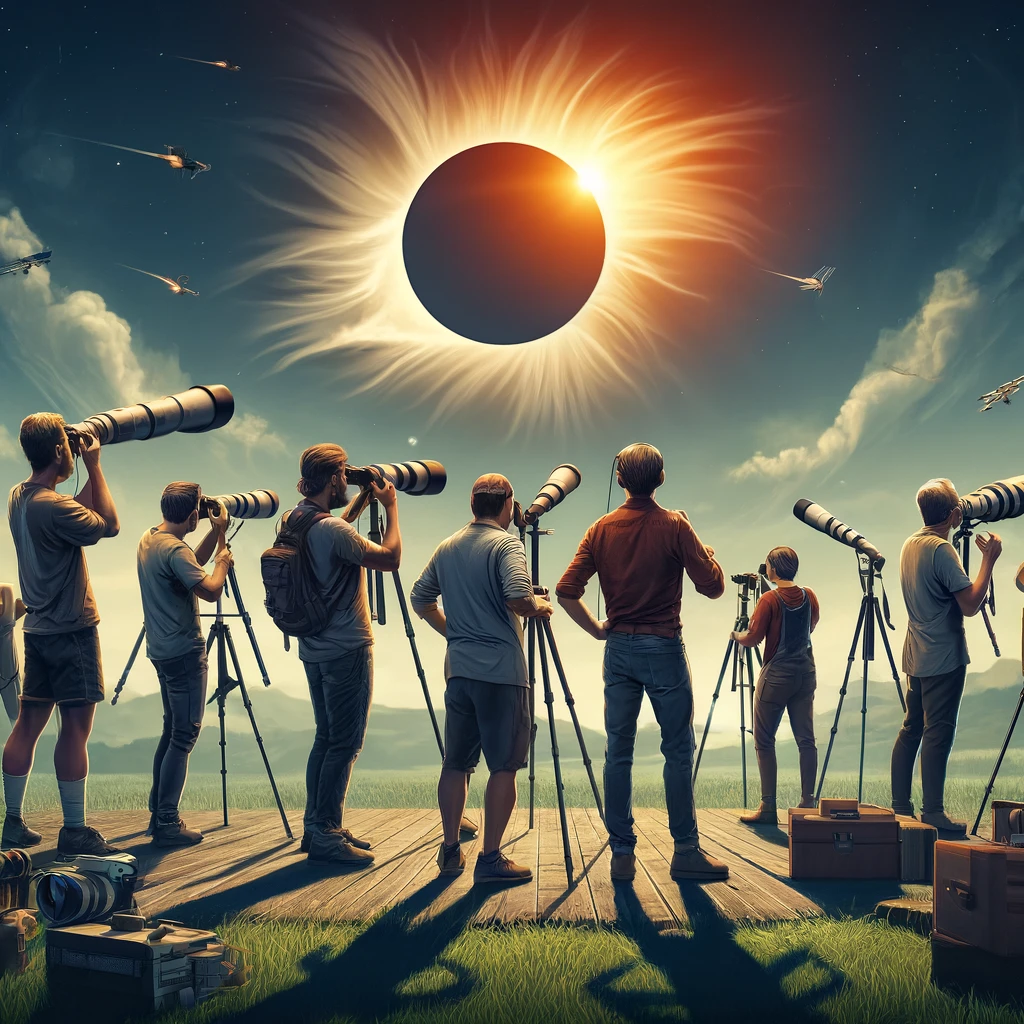
Photographing an eclipse is an exciting challenge that combines the art of photography with the science of astronomy. Whether you’re an amateur with a smartphone or a professional with sophisticated gear, capturing the 2024 eclipse requires preparation and understanding of the right techniques and equipment.
For amateur photographers, the key is simplicity. Using a smartphone or a basic camera, you can capture the eclipse’s essence without complex setups. Ensure to protect your device’s lens with a solar filter to prevent damage. For better results, use a tripod to stabilize your device, set the focus to infinity, and experiment with different exposure settings to find the best shot. Remember, never look directly at the sun through your device’s viewfinder or screen.
Professional photographers can delve into more intricate details to capture this astronomical event. A DSLR or mirrorless camera with a telephoto lens is ideal for zooming in on the eclipse. A solar filter is mandatory to protect your camera sensor and your eyes when setting up the shot. Manual focus is recommended, as autofocus might struggle with the dimmed light. Shooting in RAW format will give you more control during post-processing, capturing maximum detail.
Regardless of your equipment, understanding the phases of the eclipse is crucial for planning your shots. The partial phases offer a gradual transformation, ideal for time-lapse sequences. The totality phase, however, is the main event, allowing you to capture the sun’s corona without a solar filter. This moment is fleeting, so being well-prepared is key.
Exposure settings will vary depending on the phase of the eclipse. During partial phases, the sun is still bright, requiring a fast shutter speed, low ISO, and a small aperture. During totality, the lighting conditions change drastically, necessitating adjustments to capture the corona’s details without overexposing the surrounding landscape.
Safety is paramount. Always protect your eyes and equipment when photographing the sun. Use solar viewing glasses when looking directly at the sun, and only remove the solar filter from your camera during the total eclipse phase.
In addition to technical preparations, consider the composition of your shots. Including elements like the landscape or silhouetted figures can add scale and context to your eclipse photos, transforming them from simple snapshots into compelling stories.
After the eclipse, post-processing plays a crucial role in bringing out the best in your photos. Adjusting contrast, sharpness, and color balance can help highlight the details captured during the event, especially the elusive corona during totality.
In conclusion, photographing an eclipse is a rewarding endeavor that requires careful planning and execution. Whether you’re capturing this celestial event for personal enjoyment or professional pursuit, the key is to prepare thoroughly, practice safety, and embrace the unique challenges of eclipse photography. With the right approach, you can create stunning images that encapsulate the awe-inspiring beauty of an eclipse, preserving the memory of this rare celestial spectacle for years to come.